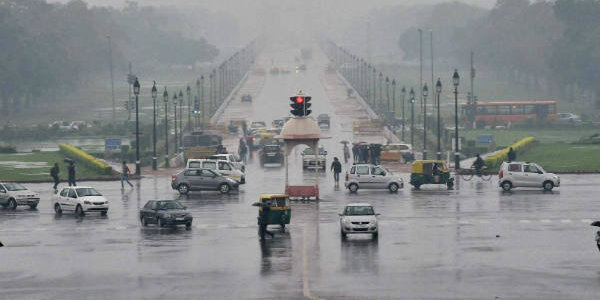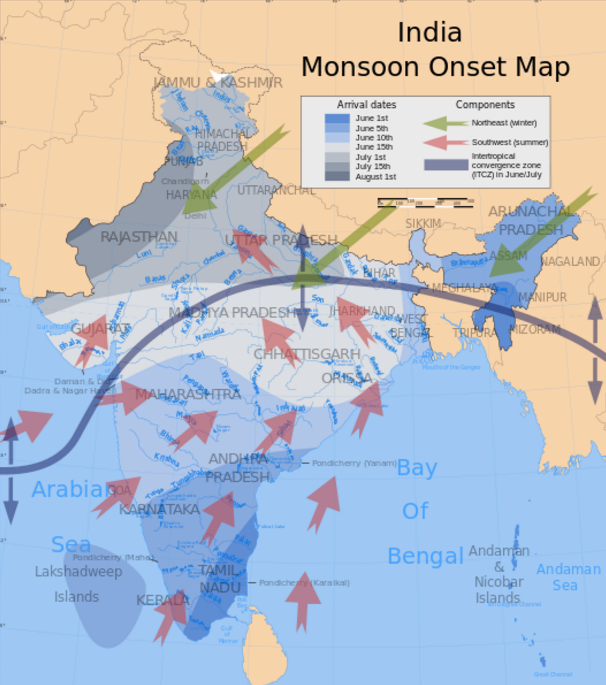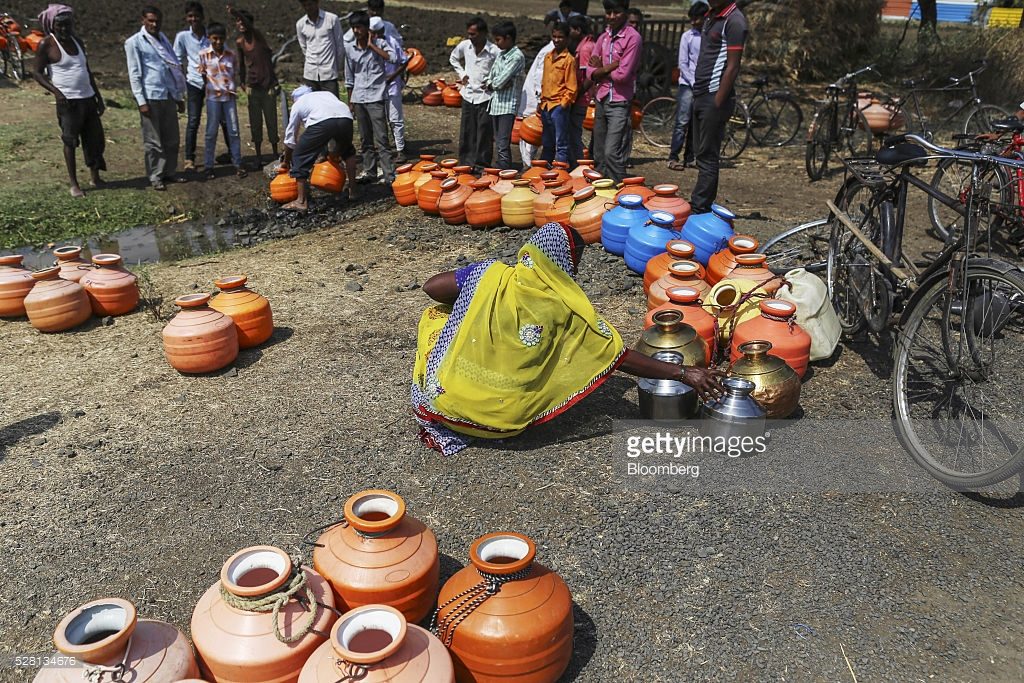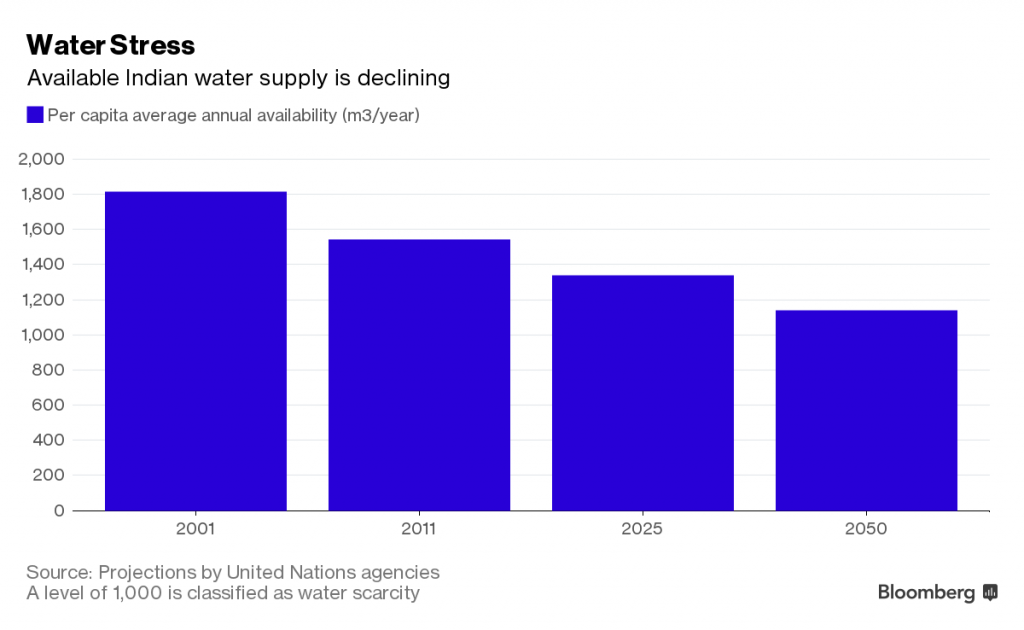By Harland Dahl, from New Delhi
With over a third of India’s states experiencing severe water crises and many others facing a blistering heat wave, India’s monsoon season couldn’t have come soon enough. The southwest monsoon supplies India with 75% of its water for the year. This year, drought conditions have been severe enough to require some Indian cities to stockpile food and water from other regions. In Maharashtra’s Latur, for example, water trains have been used to bring drinking water to thirsty populations from over 300 kilometers away.

Source: SkyMet Weather
The strength and timing of monsoon season can have an effect on India’s economy, as well. As agriculture is the main source of income for roughly half of India’s population, a strong monsoon season can mean lower prices for food and crops, reduced inflation, and provide economic stability for India’s farmers and farming communities.
Although droughts have become increasingly frequent in India over the past few decades and parts of India currently face water crises, this year’s monsoon may be heavier than usual. Earlier this year, the India Meteorological Department predicted that, on a national level, the summer’s monsoon would bring above-average rainfall. Although the monsoon’s late arrival in mid-June temporarily exacerbated water shortages in parts of the country, it’s above-average performance has been a relief to many. So far, this season’s total rainfall has been 1% higher than average. Monsoon rains were 35% above average in the first week of July, and in the northwest of the country, rainfall went up to 57% above normal rates.

Monsoon flooding has primarily affected northern, central, and western India. Rains have been particularly heavy in the states of Madhya Pradesh, where 15 people were killed as a result of heavy rains, and Uttarakhand, where upwards of 40 people died after flash floods and the landslides they caused. In the northeastern state of Assam, flash floods have displaced families and prevented movement between villages. In the state’s Jorhat district, for example, almost 20 villages have been cut off by flooding.
While some areas have been receiving above average rainfall, others still face a rainfall deficit. Uneven monsoon coverage has resulted in a 17% rainfall deficit in the country’s eastern region, and certain states have even higher deficits. The Kutch region, for example, has a rainfall deficit of 84%. The state of Gujarat has taken steps to make up for a deficit of 58% by distributing supplies of drinking water and cattle fodder to its driest areas.

Source: Getty Images
The World Resources Institute estimates that half of India’s 1.3 billion people experience severe water stress. After two years of weak monsoons and dry, hot summers, many areas face droughts. Water shortages have created “water refugees”, forcing some families to relocate in search of safe drinking water and others to travel as many as 9 kilometers to reach water supplies. Even in some areas facing only mild shortages, like rural Uttar Pradesh, it is common for drinking water to be contaminated by pollution from factories or human waste. It is estimated 130 million Indians live in areas where groundwater is contaminated by at least one dangerous pollutant such as arsenic or nitrate. In areas like these, dry seasons and water shortages mean that many have no option but to drink contaminated water. Residents here look forward to a the year of above-average rainfall predicted by the India Meteorological Department.

India’s water supply has been steadily declining over the past few years, and Prashant Goswami, Director of the CSIR National Institute of Science, Technology and Development Studies in New Delhi, estimates that Delhi could exhaust its water supplies in less than 1,000 years. Despite low supplies, India continues to lose water through its agricultural exports each year. India accounts for 2.5% of global agricultural exports, and is estimated to have exported 25 cubic kilometers of water embedded in exports in 2010, alone. This estimate doesn’t include the water used to grow grains and rice, and is enough to supply water for almost 13 million people.
Water shortages, dry weather patterns in some areas, and heavy flooding in others, make accurate weather prediction tools important for preparation for future extreme weather in India.
Statistical models have been used by India to predict monsoon rains since the 1920s, when India was under British colonial rule. Although these statistical models have been reinvented multiple times since then, some experts have questioned the accuracy of these models, which use temperatures, wind patterns, El Niño and La Niña, and Ganges flows to predict weather patterns. This year, the India Meteorological Department is investing $60 million into an improved forecasting system, which will be based on U.S. dynamical weather prediction models. The new system, which could increase the accuracy of the IMD’s predictions by 15%, should be introduced by 2017.